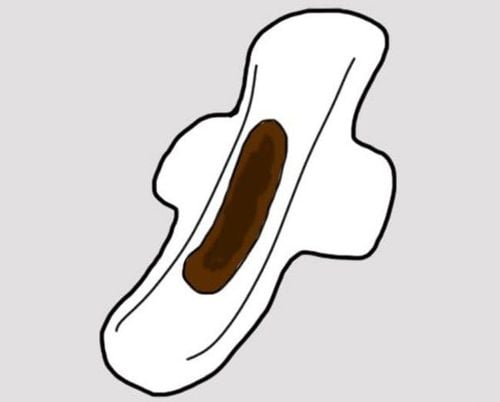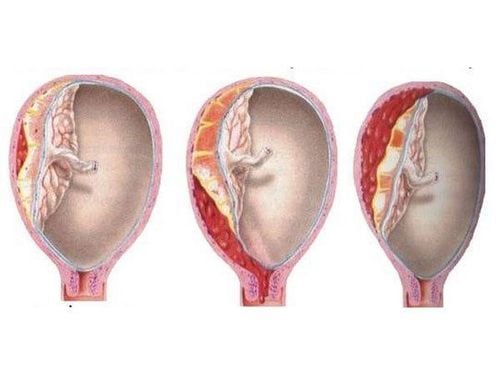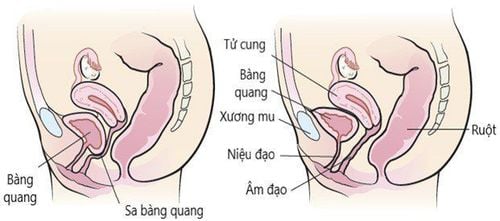This is an automatically translated article.
The article was professionally consulted by Doctor Nguyen Chi Quang, Department of Obstetrics and Gynecology - Vinmec Central Park International General Hospital.Uterine - bladder prolapse is a disease that brings many difficulties to women, especially in the postpartum period. The disease will cause dangerous complications if not detected in time and have the right treatment.
1. What is uterine prolapse? Signs of uterine prolapse
Uterine prolapse is a phenomenon that occurs when the uterus drops into the vaginal canal, maybe even out of the vagina due to the ligaments and pelvic floor muscles stretching, the uterus is not supported. Uterine prolapse is divided into 4 grades. Patients with uterine prolapse grade II and III, IV will be performed surgery to suspend the uterus.Signs of uterine prolapse depend on the severity of the disease. For mild disease, it is difficult for patients to detect signs of disease because the symptoms are not clear and do not affect daily life much. Some specific manifestations of each level are as follows:
Level 1: patients often have signs of heaviness in the abdomen before the menstrual period, when standing for a long time or when doing heavy work often have signs of back pain. Urinating a lot and the amount of urine each time is not much. Level 2: the patient feels more pain, difficulty and heaviness. Abnormal vaginal bleeding, white discharge, mucus. During sex, the patient will feel the uterus sag outside the vaginal opening Level 3: The patient's condition becomes heavier and more dangerous. The uterus is swollen, ulcerated, festering and sometimes has a yellow discharge. Patients may have a high fever and constipation when the disease worsens. Level 4: Uterine, cervix, bladder completely prolapse, causing cervical ulcer, patients can have urinary retention, can't have intercourse Symptoms of uterine prolapse can be confused with a prolapsed uterus. Some other diseases such as patients with ovarian cysts... Therefore, in order to accurately diagnose your own condition, it is necessary to immediately go to a reputable medical facility for examination.
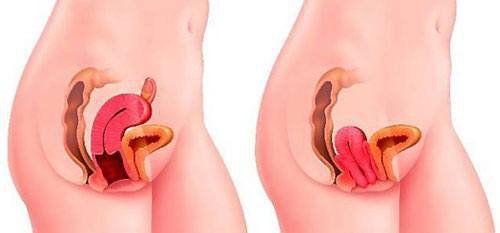
Sa tử cung là hiện tượng xảy ra khi tử cung tụt xuống vào trong ống âm đạo
2. What is bladder prolapse? Bladder prolapse sign
Bladder prolapse is a condition in which a woman's bladder becomes out of place and slams into the vagina.When the vaginal wall organs are weakened and are not able to hold the pelvic organs in place, bladder prolapse occurs. It can cause the bladder to recede or bulge.
Muscle tension of the pelvic area such as the process of pushing, constipation, intense coughing can also lead to bladder prolapse.
If bladder prolapse is mild, surgical treatment is not required. However, if the patient has severe prolapse, surgery may be necessary to keep the vagina and other pelvic organs in place.
Some telltale signs of bladder prolapse such as:
Bladder is lowered into the vagina: feeling like you are sitting on a ball when you sit down, when you get up or lie down, there is no feeling this. This is the most obvious sign of bladder prolapse. Pelvic pain: The patient may feel pain and discomfort in the lower abdomen, pelvis or vagina. Urinary tract problems: you can't control your urination when coughing, sneezing, laughing loudly when doing something due to pressure. The main cause is usually bladder prolapse. Women with prolapsed bladder are more likely to have bladder infections, so it's important to note the frequency with which urinary tract infections occur. Pain after sex: the cause may be due to bladder prolapse Back pain: Women with uterine prolapse often feel pain, pressure, and discomfort in the lower back.

Nếu tình trạng sa bàng quang ở mức độ nhẹ thì không cần phải thực hiện phẫu thuật điều trị
3. Surgery to suspend the uterus-bladder to the aluminum apex
To treat uterine prolapse, bladder prolapse, mainly open surgery is used. Currently, thanks to the advancement of modern medicine, laparoscopic surgery method is being favored and chosen by many countries.Vinmec International General Hospital is implementing and applying a new and modern surgical method with high accuracy that is: Laparoscopy Placement of the uterus-bladder suspension graft into the apex with minimally invasive surgery encroachment. This is a surgical method with a low risk of infection, a short hospital stay, and a quick recovery time for the patient.
Under the direction and implementation of Dr. Nguyen Chi Quang - 12 years of experience in laparoscopic surgery with a team of experienced and skilled medical staff and doctors, patients with uterine prolapse - bladder will be operated on. technique with high safety and efficiency.
For more advice on the Gynecological Surgery promotion program and to book an appointment for examination and treatment at Central Park International General Hospital, please contact Hotline: 0283 6221 166 or register online AT THIS .
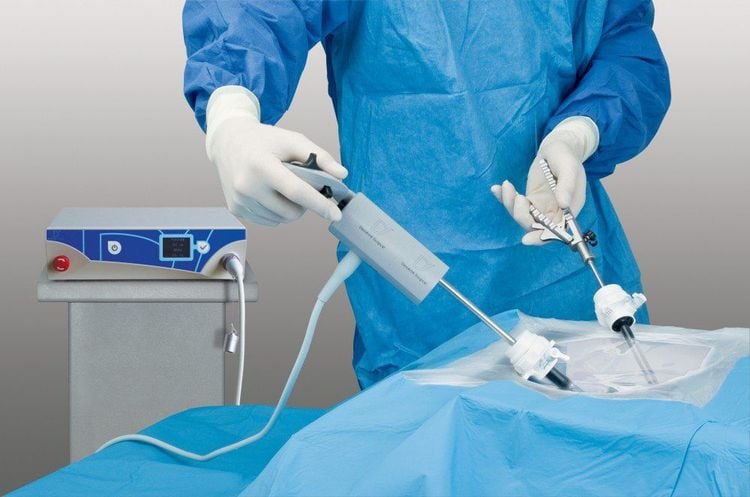
Phẫu thuật ít xâm lấn bằng cánh tay robot







